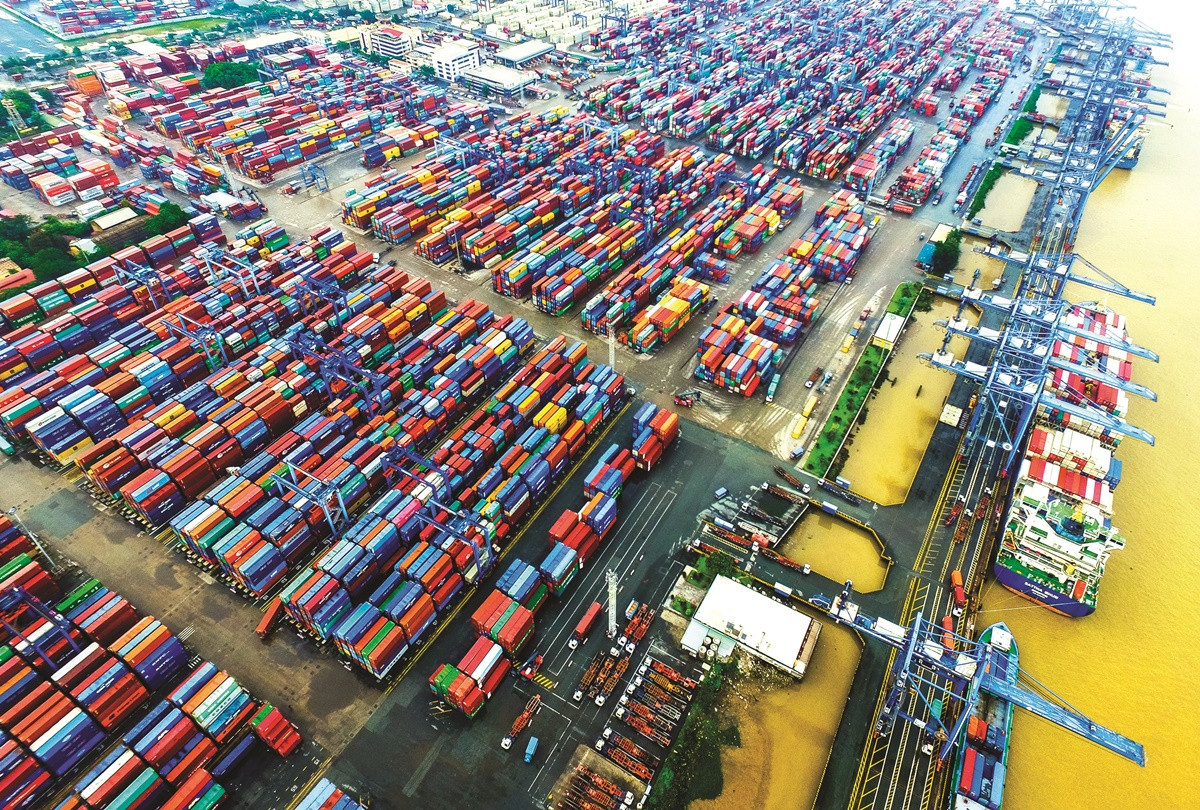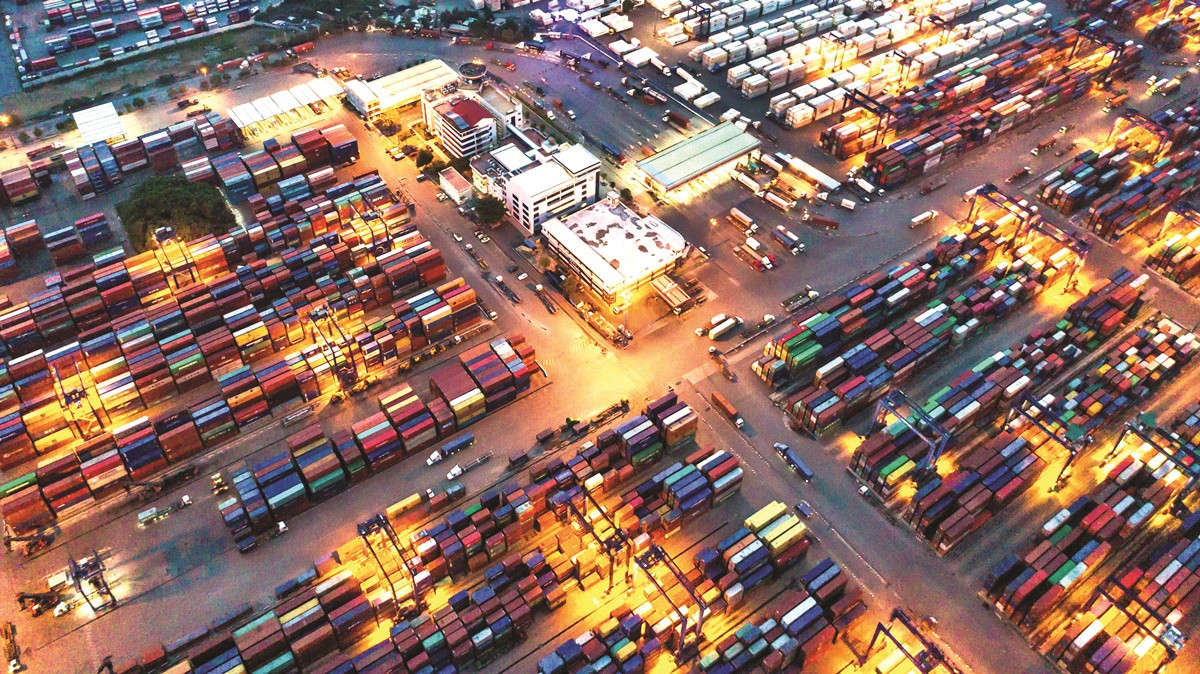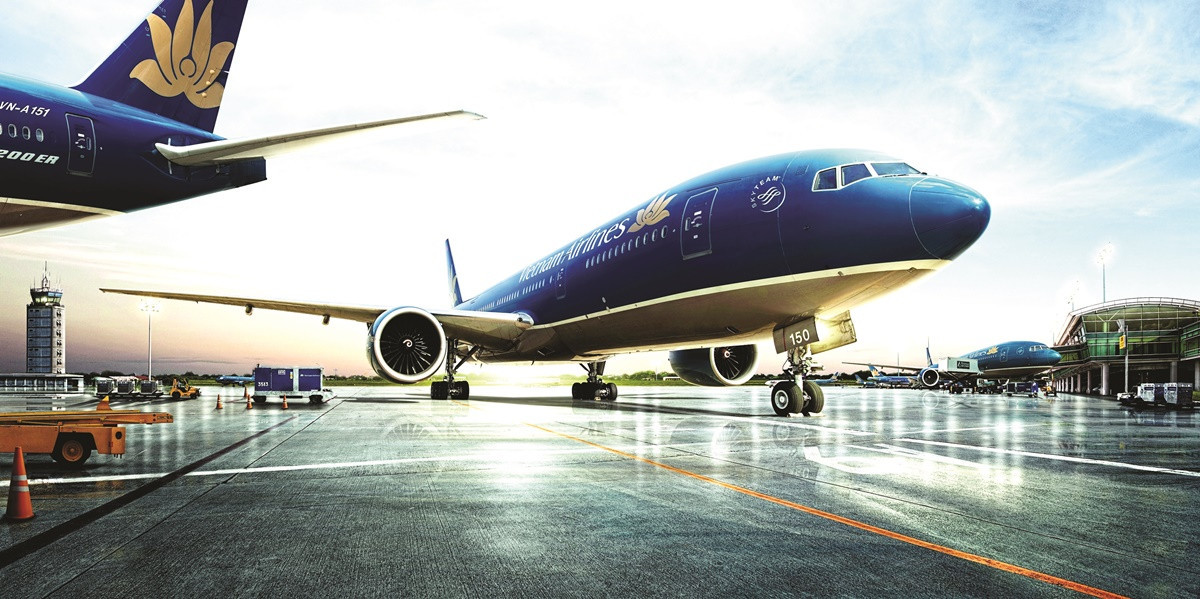Strategy of sustainable development for the logistics to 2025
Thời sự - Logistics - Ngày đăng : 08:47, 08/02/2022

The Decision no.221/QD-TTg dated February 22, 2021 by Prime Minister amended and supplemented the Decision no.200/QD-TTg dated February 14, 2017 on approving the Action Plan to improve competition abilities and to develop Vietnam’s logistics service sector to 2025, which set out 61 tasks to develop the logistics service sector sustainably with 6 specific targets. Accordingly, “by 2025, the rate of logistic service sector’s contribution to GDP will reach 5% - 6%, logistics service growth rate will reach 15% - 20%, the rate of logistics service outsourcing will reach 50% - 60%, logistics costs will decrease equivalently 16% - 20% of GDP, the world’s LPI will reach the rank of 50th or higher.”
For effective implementation of the Resolution of the Party Congress and the above tasks, with the spirit of “innovation and creativity”, our logistics service sector need to have strategic breakthroughs to overcome the pandemic of COVID-19 for a sustainable development to 2025, serving the recovery and sustainable development of the supply chain, contributing to production development and improving competition abilities of Vietnam’s import- export. It can be said that the pandemic has been a radical challenge to Vietnam’s logistics service sector. And it was the pandemic that affirmed the role of the logistics sector- an important service sector of the economy and social life. By logistics service activities, it has had practical contribution to the recovery and development of the supply chain: Vietnam’s import and export turnover in 2021 exceeded USD 650bn and a trade surplus.
Breakthrough solutions mean breaking deadlocks, breaking down barriers in business operations so that the development of the business has higher quality and increased workload, bringing more profits for better contribution to the country.
In the spirit, to restore and sustainably develop the logistics service sector and serve the sustainable development of the supply chain and the economy in the new normality after the COVID-19 pandemic, the logistics services sector needs to have strategic breakthrough measures, focusing on the following main contents:
Applying information technology, digital transformation, creative innovations
Application of information technology, digital transformation and innovation go together with developing human resource of high quality. It is encouraging that by 2025, 60% of enterprises will successfully completed their digital transformation. Digital transformation will improve their productivity around 30% - 35% depending on the digital application platform. Our labor productivity is lower than those of ASEAN countries- equally to 7.6% of Singapore’s. Training for human resource’s higher quality and improving labor productivity will help enterprise improve service quality with increasingly higher demands when serving logistics activities in new markets and logistics activities from FTAs, especially CPTPP, EVFTA, RCEP...
Completing e-DO project for container sea and air ways in the first half of 2022. When it is completed and put into operation, it is expected to save much time and costs for import- export operators and logistics service providers- around VND 500 - 700bn annually. Researching e-B/L and other transport e-documents. Cooperating with the Vietnam’s Digital Agriculture Association (VIDA) to develop digital logistics serving agro-logistic and green logistics, aiming at implementing PM Pham Minh Chinh’s commitments in COP26 “Vietnam will have net zero emission in 2025” serving promoting export of agricultural and sea products, reduce post-harvest spoilage (currently about 25% - 35% depending on the type of export goods), guiding to hire means of transport for export goods with more competitive price to reduce logistics costs and improving supply chain efficiency, improving cooperation among logistics enterprises and agriculture product producers.
Developing 3PL and 4PL logistics enterprises
Developing strong 3PL and 4PL logistics enterprises to be the locomotive for other logistics service providers, first of all, member enterprises of the Vietnam Logistics Business Association (VLA). Currently, VLA has many strong 3PL integrated logistics service providers as Saigon Newport, Gemadept, Transimex, Sotrans or smaller businesses like T&M Forwarding using CargoWise One - a logistics technology platform being applied globally. However, most of our 3PLs are still at the initial stage compared to transnational 3PLs operating in Vietnam. Rapidly implementing the application of information technology and digital transformation and having a team of highly qualified professionals trained in both theory and technology, expanding international cooperation will help 3PLs become stronger and becoming 4PLs, even small and medium enterprises.

Opening of representative offices abroad, expanding the niche logistics market will help logistics service businesses increase job opportunities in the context that the global supply chain is shifting in favor of Vietnam when the current COVID-19 pandemic has complicated happenings. Actively seeking and associating with import-export enterprises, international enterprises, notably participating in the World Logistics Passport Project, where the Vietnam Association of Logistics Service Enterprises is the focal point of Vietnam. Developing 3PL and 4PL logistics businesses will help the logistics industry increase high added value for the supply chain.
Developing enterprises transporting cargo by air and sea ways
Vietnam has currently had no fleets of aircraft for cargo transport and has still depended on foreign hired planes. In the difficulties caused by the pandemic of COVID-19, international and domestic passenger routes could not be exploited, a number of airlines as Vietnam Airline, Vietjet Air, Bamboo Airways flexibly changed their passenger planes into cargo ones for logistics companies to hire- the whole plane or in combination with passenger transport- to meet the quick development of cross-border trade. However, 88% of the market share belongs to international carriers as KE, QR, CI, CX, UPS, DHL, FedEx. In the situation, a number of enterprises in VLA contributed capital to establish ASEAN Cargo Gateway (ACG)- their first flight was on March 6, 2021, providing fixed air cargo transport service for routes of Saigon - Jakarta, Saigon - Bangkok, Saigon - Incheon and the initial step is Hanoi - Incheon with an more incentive fare of 10%-20% compared to the market fare. Forming Hubs for cargo transited to Europe, helping to solve difficulties for import - export by airway.

Besides, it is also necessary to develop the national container shipping fleet according to an appropriate roadmap. In the initial short-term, developing a container fleet for intra-Asia rotes. In the second phase, developing a container fleet with large tonnage for routes of Vietnam - Europe - the U.S to reduce dependence on foreign fleets transporting 100% of Vietnam’s export goods for distant shipping and to increase foreign currency revenue for the State. At the same time, encouraging sea transport enterprises to JV with foreign shipping lines, as Vietnam’s Maritime Corporation (VIMEC) join ventured with an Indian company to open a regular container route HCMC - Hai Phong, connecting Vietnam - Malaysia and India, with 10 day time shorter.
Promoting international cooperation in developing logistics centers
Promoting international cooperation in developing logistics centers, especially in key economic regions such as the Mekong River Delta and the Red River Delta. Currently, our country is in shortage of regional and international logistics centers. Several large centers in Hanoi are under construction and Hai Phong has formed the project. But it is urgent to build a logistics center in the Mekong Delta region to meet the import-export needs of agricultural products and seafood, which account for a large proportion of Vietnam's import- export goods. This center must have international feature for immediate and longterm service. VLA Members will gladly cooperate in the construction of these centers .
